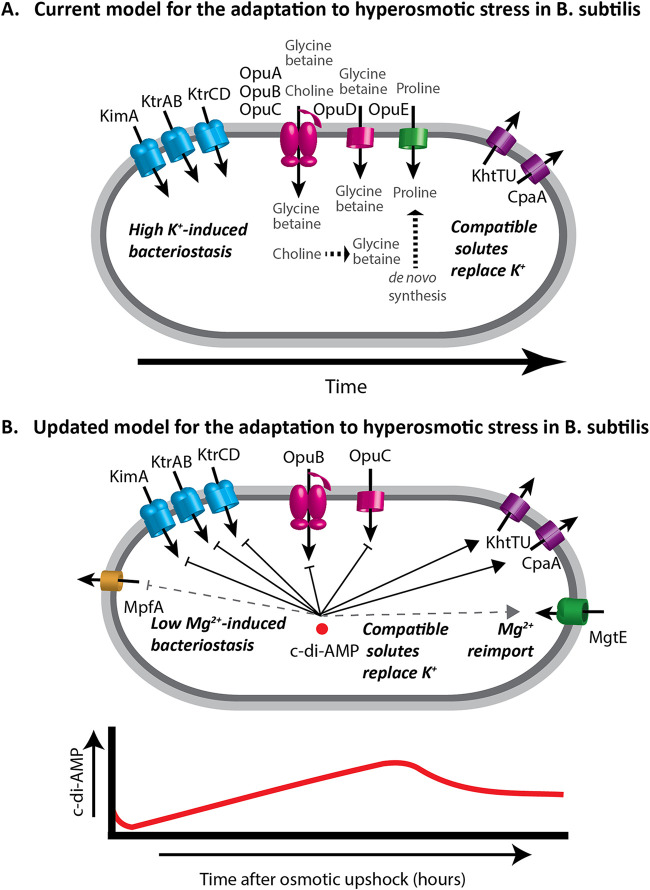FIG 7.
Osmotic stress response in B. subtilis. (A) In the current model, when cells encounter hyperosmotic stress they rapidly import K+ to stabilize turgor and retain cellular water. Compatible solutes are then accumulated through import or synthesis and K+ is exported. In the presence of compatible solutes K+ import is reduced, and turgor is maintained without gross disruption of ion pools. (B) In our updated model, K+ import is accompanied by Mg2+ loss, and essential cell processes such as translation are thereby inhibited. In the absence of MpfA, Mg2+ homeostasis is perturbed and MgtE levels are reduced, which diminishes the capacity for Mg2+ reimport, thereby delaying osmoadaptation. (Lower panel) Cyclic-di-AMP varies during osmoadaptation and functions to inhibit expression and activity of K+ and compatible solute importers and to activate K+ exporters. This signaling nucleotide may also regulate Mg2+ homeostasis during osmoadaptation.

